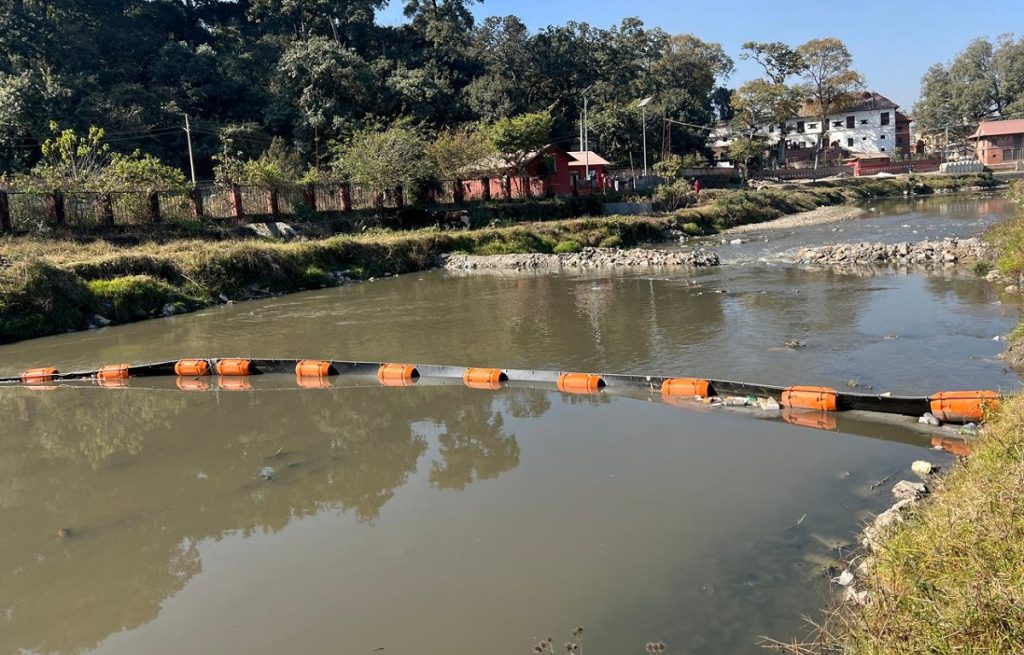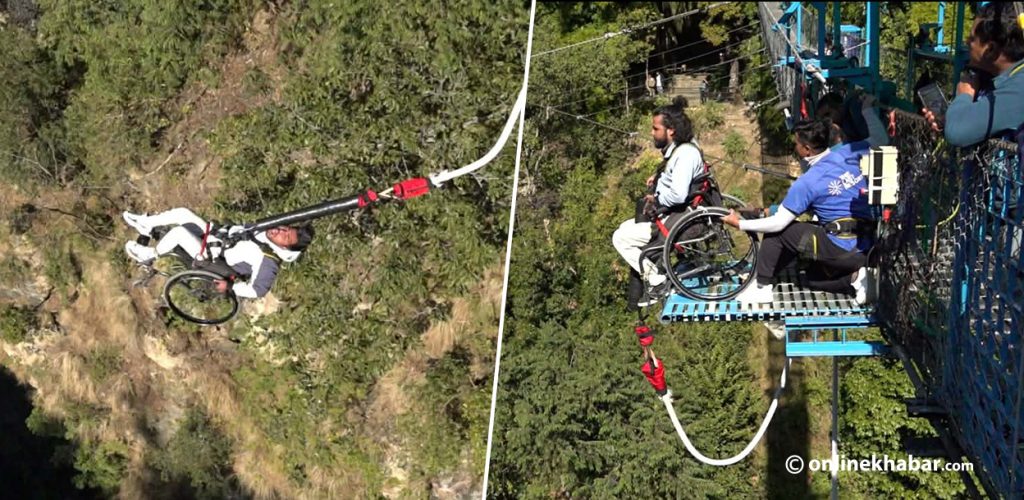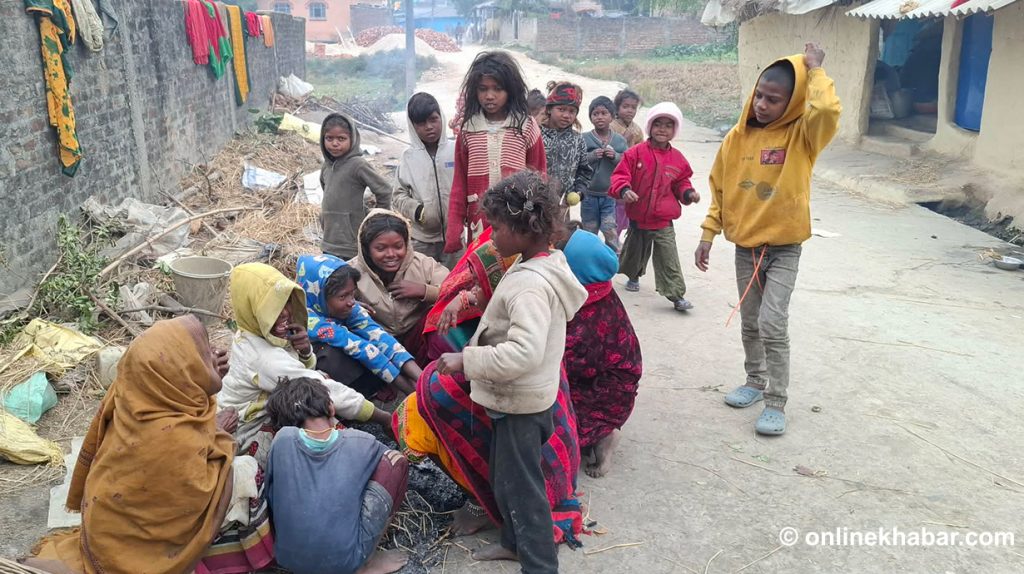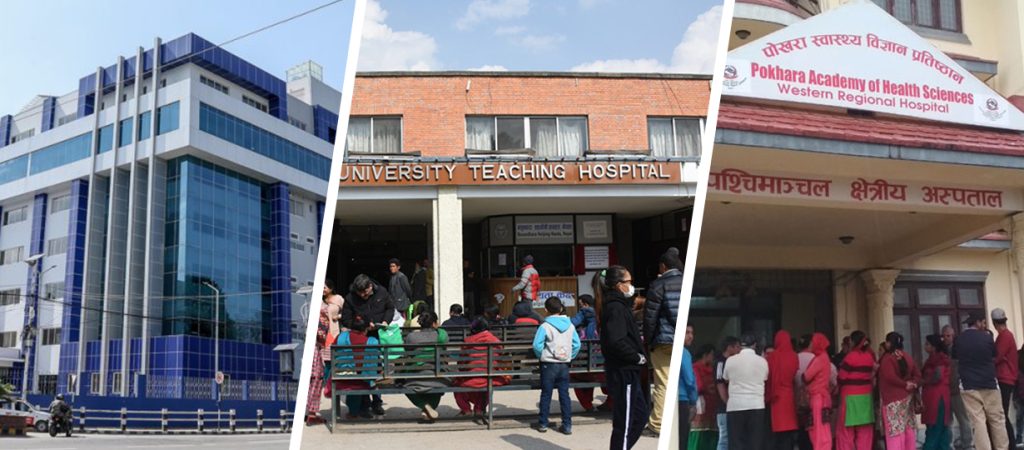
In the quiet corners of rural Bajhang and the bustling streets of Kathmandu, a silent crisis is growing—one that does not spread from person to person but claims more lives each year than any infectious disease. Non-communicable diseases (NCDs) such as heart disease, diabetes, cancer, and chronic respiratory illnesses are now the leading cause of death in Nepal.
Burden of non-communicable diseases (NCDs) has been showing increasing trend in Nepal. The WHO STEPS Survey 2019 in Nepal revealed that the deaths due to NCDs were 71.1 per cent of total deaths which increased from 63.7 per cent in 2015.
Cardiovascular diseases (CVDs) accounted for 24 per cent, Chronic obstructive pulmonary diseases (COPD) 16.3 per cent and cancer 11.1 per cent of total deaths. Total Disability Adjusted Life Years (DALYs) due to NCDs was 61.2 per cent of which cardiovascular diseases (CVDs) shared 11.9 per cent, cancer 11.9 per cent and COPD 7.31 per cent. Expenditure of NCDs was also the highest among disease specific health expenditure (39.5 per cent).
Among out-of-pocket expenditure, NCDs accounted for 40.3 per cent of total household OOP health expenditure. Factors contributing to this rising burden include increasing life expectancy, demographic and epidemiological transitions, rapid urbanisation, and lifestyle changes. The growing disease burden has been linked to a decline in quality of life, an increase in Disability-Adjusted Life Years (DALYs), and catastrophic health expenditures.
This has led to a decline in quality of life, higher DALYs, and catastrophic health costs. STEPS surveys (2008 vs. 2019) show a rise in insufficient physical activity (3.5 per cent to 6.5 per cent), high blood sugar (3.6 per cent to 8.5 per cent), and elevated BMI (17.1 per cent to 24.3 per cent) among adults.
A slow-burning crisis
Unlike viral infections that trigger public alarm and emergency lockdowns, NCDs develop gradually, often unnoticed until it’s too late. They are often dismissed as “diseases of the old,” yet increasing numbers of young Nepali’s are being diagnosed with hypertension, diabetes, and liver disease, some in their 20s and 30s. In many cases, these diseases are preventable, caused largely by poor diet, physical inactivity, tobacco use, and alcohol consumption.
What makes this crisis particularly dangerous is its invisibility. Most people do not realise the seriousness of NCDs until a heart attack, stroke, or cancer diagnosis strikes close to home. In remote districts, lack of awareness and limited access to screening or treatment make the situation even worse.
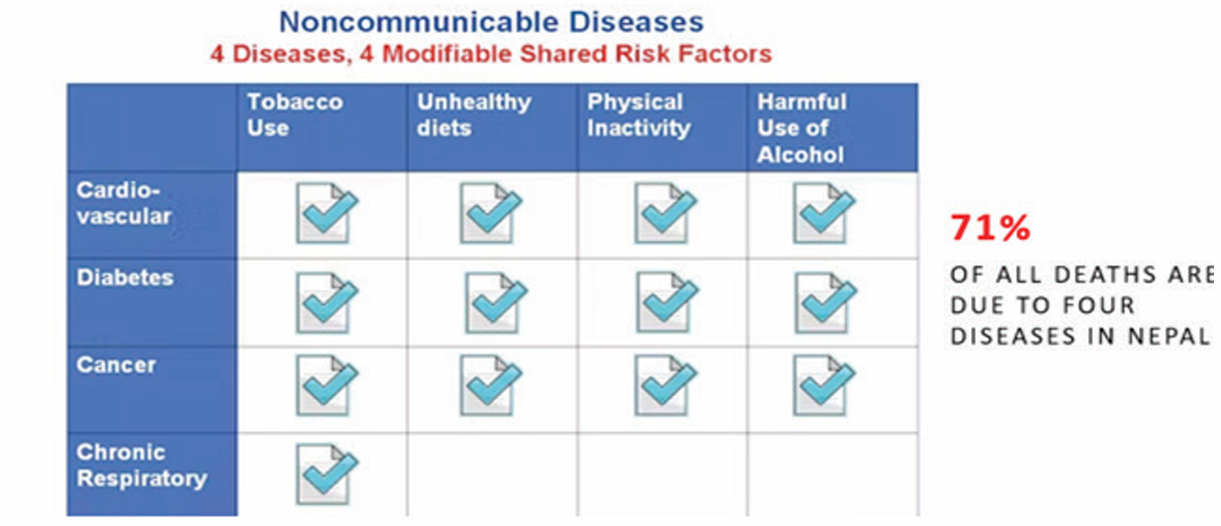
The urban-rural divide
Urbanisation has transformed how Nepali’s live and eat. Processed food high in salt and sugar has replaced traditional home-cooked meals. Physical activity has decreased as more people shift to sedentary jobs.
In cities, the effects are visible, but rural areas are catching up. Due to limited healthcare infrastructure, early detection and management are rare in mountain and hill districts, where patients often travel for hours or days to reach a hospital.
Recently, the Health Office Bajhang conducted health screenings for 8,511 individuals aged 30 and above, across 12 Palikas. Among those screened, 565 were diagnosed with hypertension, 230 with diabetes, 21 with kidney disease, and 348 with obesity. Evidently, NCDs are becoming a significant health concern even in Nepal’s rural regions, including Bajhang.
Health system not yet ready

Nepal’s health system is still heavily geared towards infectious diseases. While progress has been made in maternal and child health, there is a lack of investment in NCD prevention and care. Most government hospitals do not have regular screening programs for blood pressure, diabetes, or cancer.
Furthermore, health education in schools and communities barely covers lifestyle-related illnesses. The cost of treating NCDs is pushing families into poverty. A single stroke or heart surgery can wipe out a family’s entire savings.
Unlike vaccines or antibiotics, which are relatively cheap, long-term NCD management requires regular medication, lifestyle changes, and frequent monitoring- resources that are often unavailable or unaffordable for many.
MSAP II for prevention and control of NCDs
Government of Nepal has prioritised NCDs and has strategic planning based on National Multi-sectoral action plan II (MSAP II) for NCDs (2021-2025). The goal of MSAP II is to reduce burden of NCDs through “whole of government” and “whole of society” approach.
The overarching target is to reduce premature death from major NCDs by 25 per cent by 2025 and by one third by 2086/87 BS (2030). The objectives of MSAP II for NCDs are to prioritise prevention and control in national policies, strengthen governance for multi-sectoral action, reduce risk factors and address social determinants, enhance integrated and equitable healthcare, and establish surveillance and evaluation systems for evidence-based policies.
The Government of Nepal has implemented several critical programs to effectively manage non-communicable diseases (NCDs). These include:
- Nepal PEN Program (Package of Essential Non-communicable Diseases)
- Hypertension Care Cascade Initiative Nepal (HCCIN)
- PEN Plus Program (for severe chronic NCDs at rural health facilities)
- National Cancer Control Strategy (2024-2030)
- Behavior Change Communication (BCC) initiatives targeting NCD risk factors
These programs aim to strengthen NCD prevention, early detection, and treatment across the country. By improving access to screening and care, they are expected to reduce catastrophic health expenditures and enhance early diagnosis of NCDs in the years ahead.
With sustained implementation, these initiatives will play a vital role in Nepal’s fight against the growing burden of non-communicable diseases.
A call to action
The good news is that many NCDs are preventable. Simple interventions like reducing salt in food, exercising regularly, quitting tobacco, and screening adults above 30 can make a massive difference. Local governments and schools can lead the way by promoting health education, organizing free screening camps, and banning junk food in school canteens.
Nepal’s policymakers must also recognise that NCDs are not just a health issue, they are a development challenge. A sick population cannot drive economic growth. The government must invest in primary healthcare, support public awareness campaigns, and integrate NCD services into existing health programs.
Implementing principle of article 232 of the constitution of Nepal 2072 BS, coordination, collaboration and coexisting between federal, state and local governments would help to develop and design NCDs packages and projects in more culturally appropriate and socially acceptable ways with fostering research and evidence to build a stronger research culture for better health systems and better-quality care for people.
Doing so would not only contribute to reducing NCD’s burden and saving lives but also aid in working towards ambitious goals, a cross-cutting principle triggered by SDGs ‘leaving no one behind’ and universal health coverage.







